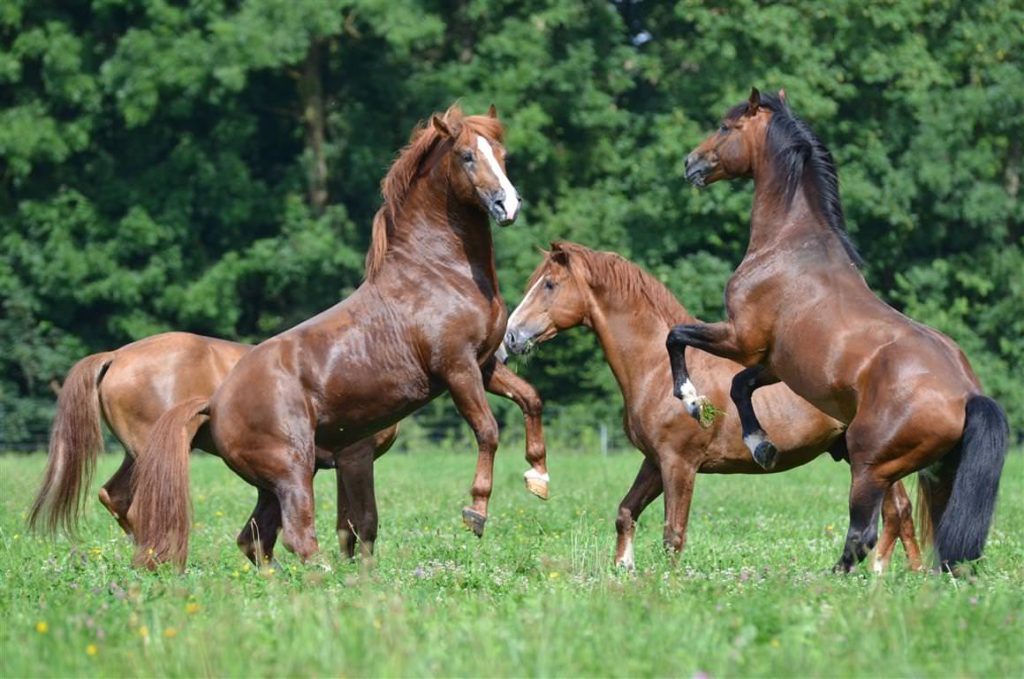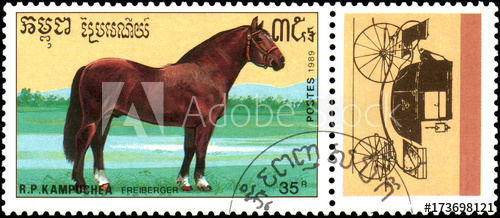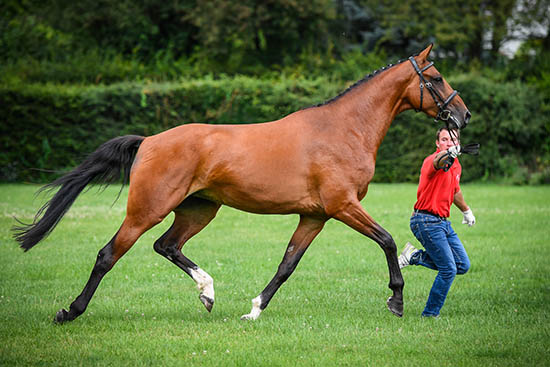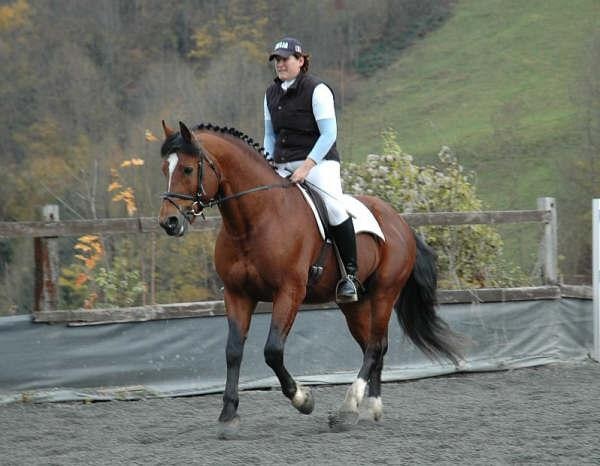1. Freiberger
The Freiberger, also known as Franches Montagnes, is a horse breed from Switzerland, from the Jura region, described as either a “heavy warmblood” or “light cold blood”. It was widely used as draft and packhorse in the Swiss army. It has a good disposition and is versatile, suitable for both driving and riding.
By the early 19th century, there were active breeders in the district of Franches-Montagnes. In 1817, there were 4,000 breeding mares on record. The horses were bred for use in agriculture and by the army as pack animals and artillery draft horses. There are records of imports of Anglo-Norman horses for the year 1821, and of other horses from England, France, Hannover and Oldenburg for the year 1830, intending to overcome the faults of the landrace breed, which was viewed as inferior due to its heavy and thick head, short neck and sloping rump, though its frame was considered excellent.

The name Freiberger appeared in the late 19th century, used for the three types of horse previously named after the districts of Franches–Montagnes, Porrentruy, and Delémont. These types were called cheval de Jura and later Franches-Montagnes regardless of which district from which they originated. They also had been called race welsche.
Until the early 20th century, it was also common to use names for the sub-types, such as Anglo-Jura for animals with Thoroughbred admixture, Normand-Jura for those with Anglo-Norman ancestry. It was only in the late 20th century that the name Franches-Montagnes became official.

The breed was crossed with Swedish Warmblood in the 1970s, especially in Alsatian studs. By 1985, about half of the breeding population were descended from these Alsatian types, with the more traditional types becoming increasingly scarce. The last admixtures to date took place in the early 1990s, with Swiss Warmblood, intending to increase the breed’s suitability for the saddle.
2. Swiss Warmblood

The Swiss Warmblood, also called the Einsiedler, is a horse breed, founded in the 10th century on the local Schwyer stock. It was first bred at the Benedictine Monastery of Einsiedeln. They are now raised at the Federal Stud at Avenches.
This horse was founded in the 10th century but then improved in the 19th century by Anglo-Norman mares and a Yorkshire Coach Horse stallion named Bracken. The breed’s most important bloodlines are from Anglo-Norman horses. The three most important of them were Ivoire, Que d’Espair, and Orinate de Messil. The Swedish Warmblood Aladin also had a strong influence on the Swiss Warmblood, along with two Holsteiners, Astral and Chevalier.
After World War II Sweden disbanded its cavalry and all but 500 of its old Warmbloods (in Sweden called half-bloods) were slaughtered. Those 500 left were sold to the Swiss Government.
The Swiss Warmblood generally stands between 15.1 and 16.2 hands high, and their coat may be any colour except pinto and appaloosa. The breed has a well-proportioned head with a straight or slightly convex profile. The chest is broad and deep and the shoulders sloping and long. They have prominent withers, a straight back, and a slightly sloping croup. The legs are strong and have well-defined tendons and good joints.
